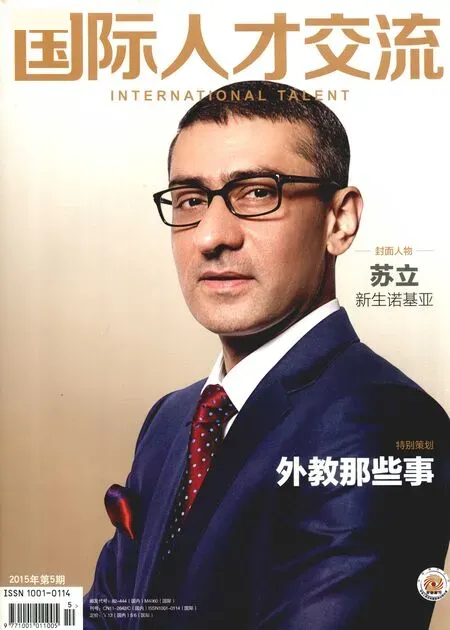一个茶朝圣者的故事
2015-12-16AnastasiaSukhoretskaya
文、译 / Anastasia Sukhoretskaya
一个茶朝圣者的故事
A Story of One Tea Pilgrim
文、译 / Anastasia Sukhoretskaya
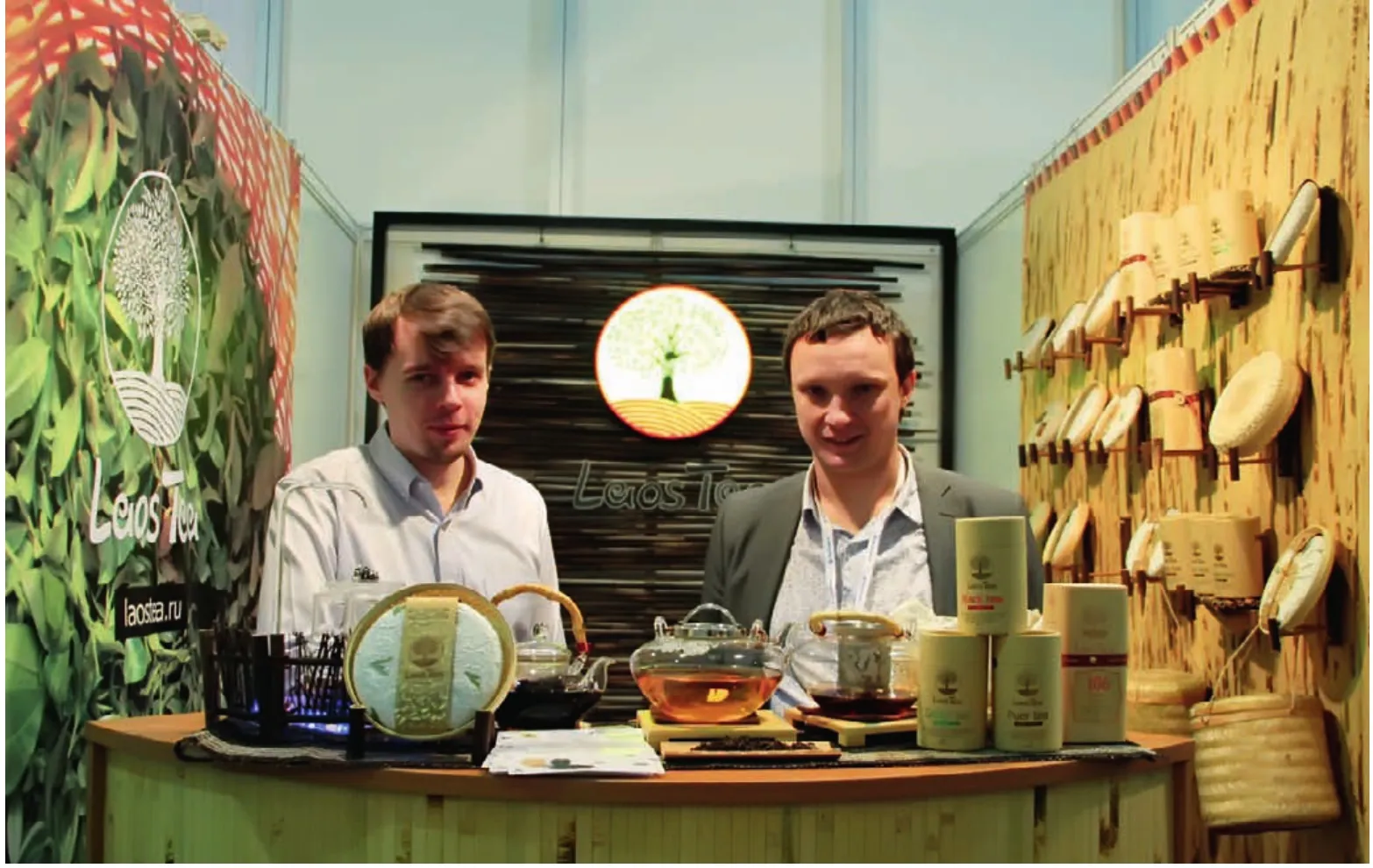
亚历山大的LAOS TEA 门店
“我说,让世界一边去吧,我只要我的茶。”陀思妥耶夫斯基小说《地下日记》中的人物如此说道。茶是一种故事,有它的讲述者和听众。它可以浪漫柔和如红茶,也可以舒缓镇静如绿茶,亦或是神秘清新如普洱茶。不同国家的人喝茶的方式以及选择茶的种类不同,但喝茶确是全球共有的爱好。中国,作为一个茶叶爱好者的圣地,吸引了许多茶的朝圣者,这种芳香四溢的饮料把他们带到了中国。亚历山大就是这样一位茶的朝圣者。2008年,茶叶的魅力促使他来到北京,此后便一直住在这里。可是,他不在中国,而是在老挝一个名为丰沙里的地方种植茶叶。
“I say let the world go to hell, but I should always have my tea.” states one of the characters in Fyodor Dostoyevsky’s novel“Notes from Underground”. Believe it or not, tea is a story, with its tellers and listeners. It can be romantic and warming like red tea, soothing and calming like green tea, or mysterious and refreshing like pu-erh tea. People drink tea differently in various countries, and choose different kinds of tea due to their preferences. The only thing doesn’t change - drinking tea is an international habit. China, being a Mecca for tea lovers, has attracted many a tea pilgrim, who, in pursuit of the fragrant beverage, drove here in stocks. Alexander Zhiryakov, one of the tea pilgrims, has been living in Beijing since 2008, and it was tea that got him to this place. However, it’s not China where he grows his tea. It is Laos, Phongsali.
在4月一个晴朗的早晨,我们在北京菜市口地铁站附近的一个佛寺见到了来自莫斯科的亚历山大。他不仅是一位茶的朝圣者,还是茶厂的生产总监。这次的采访中他将给我们谈茶叶生产、茶叶消费、茶叶偏好等关于茶叶的方方面面。我们刚一就坐,亚历山大就把水瓶和一对茶杯从背包拿出来,给我们倒了来自老挝的茶。“没来中国之前,我在莫斯科一家美国公司工作,是一名中产阶级的白领。”而现在,亚历山大是一名成功的商人。“那时候,我在莫斯科经常去茶俱乐部。茶爱好者在那儿聚集在一起聊聊天,喝点茶。”他接着说。那里的气氛和关于神秘中国的谈话迷住了他,他最终决定来中国。25岁时,他到北京大学进修中文。两年后,亚历山大回到了俄罗斯。没过多久,他又回中国了。在莫斯科,做茶叶生意的主意开始萌芽,在北京,这个想法越来越强烈,最终在老挝生根发芽。亚历山大在东南亚旅行的时候拜访了老挝,从此与老挝结缘。他的朋友给他介绍了周围的村庄,并给他品尝了当地的茶。令人惊讶的是,生长在良好的气候和零污染的环境下,茶的味道居然不好。“原来是发酵工艺使茶美味!”于是,亚历山大产生了在老挝建立茶厂的想法。
On a fine April morning we met with Alexander Zhiryakov, a Moscow-born tea pilgrim, production director in the Buddhist Temple near Caishikou subway station in Beijing to talk about tea production, tea consumption in the world, nation’s tea preferences and other topics all wrapped around tea. We took a seat. As a tea connoisseur, he dragged the thermos and a coupleof bowls out of his rucksack, and poured the Laos tea into them.“I was every bit successful middle-class man working for an American company in Moscow, ”Alexander, now a prosperous businessman, started. “At that time I frequented the Moscow tea clubs where tea lovers gathered to have a chat and drink tea. ”he proceeded. The atmosphere and talks about mysterious China captivated him so much that eventually he decided to venture into China. He was 25 when he started the two-year language program at Peking University. When the course was finished, Alexander returned to Moscow only to leave it for China again. The idea about tea making first occurred to him in Moscow, developed in Beijing and bloomed in Laos. During his travel around East Asia, he ended up in Laos, as a matter of chance. He was shepherded by his friend around the Lao villages where he had a chance to sample their tea. Surprisingly, grown and cultivated in the right climate and zero pollution environment, the tea didn’t taste that delicious. “It is the right fermentation process that makes the tea taste good. ” Alexander found out. And that’s where the idea about having a tea factory in Laos got its beginnings.
问:你在老挝拥有自己的茶场吗?
答:没有,老挝是一个社会主义的国家,作为外国人,你不可能拥有土地。茶园属于农民,是市政财产。我们和村民合作,他们采集茶叶,然后我们的卡车把茶叶带到工厂。我们在老挝建了一个中等规模的工厂。与当地人谈生意不容易。一个人不能做决定,所以如果你跟一位村民谈生意,这意味着你跟他的全村谈生意,而不是和他一个人。
Q: Do you own the tea farms in Laos?
A∶ No, Laos is a socialistic country and as a foreigner you cannot own the land. Tea plantations belong to the villages. It is called municipal property. We cooperate with the villagers and ask them to collect tea leaves so that after they are finished we send the trucks and take the leaves to the factory. We rent a middlesize factory in Laos. Anyway, it is not easy to negotiate with the locals. Every decision is made collectively in Laos, and if you are talking business with a villager, you talk with the whole village, not just him alone.
问: 你们把茶出口到哪些国家?
答: 美国、欧洲、俄罗斯、中国台湾。事实上,不同国家的人喜欢不同的茶。例如,美国人喜欢喝冰茶和袋装茶。我们曾经在法国和台湾卖茶叶,结果很有意思。法国和台湾都有自己独特的茶文化。我们把一模一样的茶叶样品寄给他们。在台湾,他们盛赞这些茶叶样品,而法国人却不满意这些茶叶。原来,区别在于泡茶的方法。台湾人喜欢泡几次茶,而法国人只泡一次。不同的泡茶方法影响茶的味道。此外,在中国流行的茶类像大红袍、铁观音在西方国家并不受欢迎。
Q: To which countries do you export your tea?
A∶ The USA, Europe, Russia, Chinese Taiwan. Actually, tea preferences are not the same in different country. For instance, tea culture in the States is different from the Chinese or Russian. The Americans like drinking ice tea and packeted tea. We had a very interesting experience in selling tea in France and Taiwan. After the tea is gathered and processed, we give it a number and send to tea dealers in different countries. France and Taiwan have both their own unique tea culture. We send them the same tea samples. In Taiwan they praise it, in France they grade the tea very low, or vice versa. It turned out, the difference lies in the way they brew tea. The Taiwanese like to drink tea in several brews, while the French brew the tea only once which adds a different flavor to the same tea leaves. Besides, the French like it sweet, while the Taiwanese prefer it bitter as they believe in the health-giving qualities of tea in accordance with the Chinese medicine. Moreover, the tea popular in China like Da Hong Pao tea or Tie Guan Yin tea do not enjoy the same popularity in the Western countries.
问: 你们在老挝生产多少茶叶?
答: 我们生产茶叶不多,每年5到10吨。在中国和越南,茶的产量比较大,而老挝一年产量仅500吨,仅相当于中国的一个工厂。并且,由于茶生长在清洁的生态环境中,由人工采摘,价格偏高一些。大部分茶叶被发送到中国。在中国云南省,它跟云南普洱茶混合在一起。其余部分出口到别的国家。
Q: How much tea do you produce in Laos?
A∶ We have a rather small volume of tea production, from 5 to 10 tons per year. A lot of tea is produced in China and Vietnam, in Laos the whole annual production is only around 500 tons a year, the volume of one decent factory in China. And as tea is grown in the ecologically clean environment and all plucked by hand, the price is higher. A big part of our tea goes to China where it is mixed with Yunnan pu-erh tea. The rest of tea goes to other countries.
问:在老挝你们生产什么茶?
答:首先是普洱生茶、毛茶。我们有绿茶、红茶(在西方国家被称为黑茶)、白茶和普洱。其实,在老挝不生产普洱茶,我们只提供原料。在老挝缺少专家,所以我们把原料发送到云南进一步加工。
Q: What teas do you grow in Laos?
A∶ First, it’s raw tea for pu-erh, mao cha. We have green tea, red tea (or, as it is known in the West, black tea), white tea and puerh. Actually, we don’t produce pu-erh in Laos we only supply the raw material for it. We are short of pu-erh experts in Laos, that’s why we send the raw stuff to Yunnan for a further procession.
问: 为什么中国的红茶在其他的国家被称为黑茶呢?
答:这是历史的问题。西方人看茶叶的颜色和外形,茶叶的颜色是黑色的或绿色的。而中国人看的是液体的颜色。因此,中国人区分六种茶类,而西方人只有两类。
Q: Why is the red tea in China known as black tea in other countries?
A∶ That’s historical issue. The Westerners judge the color of the tea by its leaf appearance, its either black or green. But the Chinese look at the color of the tea liqueur. So, in China they distinguish six main tea types, and in the West it’s only two.
问:根据客户的喜爱,你们生产的茶中最流行的是哪一种?
答: 欧洲人和美国人喜欢喝红茶,亚洲人更喜欢绿茶。
Q: According to the preferences of you clients, what is the most popular tea among the teas you produce?
A∶ Europeans and Americans like drinking black tea, and the Asians more like green tea.
问:别的国家茶叶生产的情况是怎样的?
答:在俄罗斯的南边,每年绿茶和红茶的产量达到400吨。俄罗斯有良好的茶树生长潜力。法国的气候不适合栽培茶树,南部的气候很干燥,北部又很凉。在美国,茶叶生产正在发展的过程中。他们主要栽培乌龙茶和红茶。在印度、肯尼亚和锡兰有茶叶拍卖。最大的茶叶拍卖在加尔各答,第二大在肯尼亚的蒙巴萨。一般印度茶比中国茶便宜一些,所以印度茶很有市场。
Q: What about tea production in other countries?
A∶ In Russia, its Southern regions, there are around 400 tons of tea, black and green, produced every year. Russia has good potential of growing tea. In France tea is not cultivated, the climate doesn’t suit∶ it’s too cold in the North and too droughty in the South. In the USA tea production is in the process of developing. They cultivate mostly oolong and black tea. In India, Kenya and Ceylon there are tea auctions to sell tea. The biggest tea auction is in Kolkata. The second biggest is in Mombasa, Kenia. Indian tea in general is cheaper than the Chinese, which makes it very marketable.
除此之外,我问了亚历山大他最喜欢喝什么茶。他的回答在我意料之中:他最喜欢的是自己的茶叶,种植于高山、生长在老挝这块福地。在我们的采访结束后,他向我们挥手告别,去参加另外一个会议。茶的故事未完待续。
To top all the questions, I asked what Alexander’s favorite tea was. His answer was presumable∶ the one he made himself, high-mountain and grown in the blessed land of Laos. After our interview was finished, he left for another meeting and waved us goodbye. A tea story to be continued.
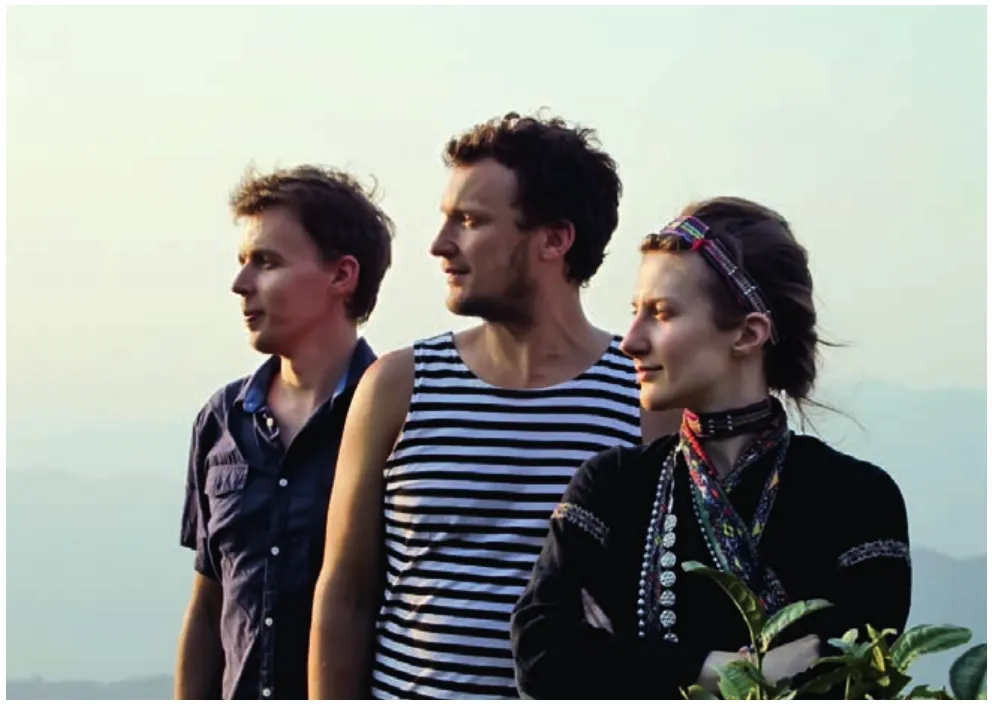
一群“茶痴”在老挝找到了新的方向
北京6月1日起“带顶带盖”公共场所100%禁烟
Beijing to Ban Smoking in Offices, Queues for Public Transport
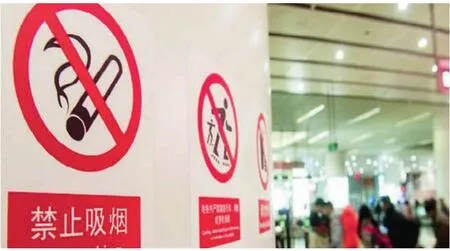
被称为“史上最严”的《北京市控制吸烟条例》将于今年6月1日开始实施。这一条例于2014年11月28日由北京市十四届人大常委会第十五次会议表决通过。
这部《条例》被称为 “最全面控烟立法”,规定今后北京市所有“带顶的、带盖的”公共场所、工作场所和公共交通工具100%禁烟;同时,幼儿园、中小学校、文保单位、体育场、妇幼保健机构、儿童医院等室外公共场所也被列入全面禁烟范围。室外也对吸烟多有限制,如排队时禁止吸烟。违者将被处以个人最高200元,单位最高1万元罚款。
On June 1, Beijing will implement its strictest anti-smoking policy yet. The policy was passed back in November,2014 by the Beijing Municipal People’s Congress and bans smoking in indoor workplaces and restricts smoking in queues outdoors while waiting for public transportation. Individual violators will be fined up to 200 Yuan, and workplaces can be fined up to10,000 Yuan.
上海:出租车早晚高峰禁用打车APP
Shanghai Bans Use of Taxi Apps During Rush Hour

近日,上海市运输管理处、市交通执法总队将会联合下发通知,明确实施早晚高峰时段(即每日7:30至9:30、16:30至18:30)本市出租汽车严禁使用“打车软件”提供约车服务措施,以缓解高峰时段打车难。并由五大骨干出租汽车经营企业现有营运车辆承担高峰车营运任务,即在高峰时段内只承接乘客路面扬招,企业叫车电话预约调度和出租汽车营业站接客等业务。
Recently, Shanghai will ban the use of taxi apps during the city’s peak traffic hours∶ 7∶30 to 9∶30, and 16∶30 to 18∶30. The Shanghai Municipal Traffic Commission previously carried out a similar order that included five major taxi companies. The taxi companies, representing one-fifth of the city’s taxis, have already implemented the ban.
美国大学内中国国际生占29%
29% of International Students in the US are Chinese
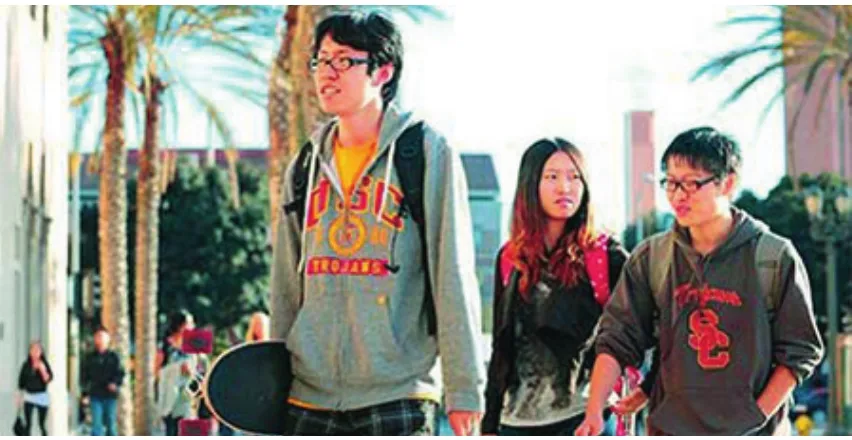
根据美国国土安全部3月25日发布的报告,美国现有113万外国学生,大多数在修读大学学位。这一数据相比去年增加了14%;比2010年增加了50%;与2005年的外国学生数量相比大增85%。细看今年的数据,中国学生占据了国际学生的最大份额——331371人,或者说29%。在密歇根州立大学,短短9年间,来自中国的本科生数量增长了8倍,达近4000人。
The US Department of Homeland Security released a report
on March 25 stating that there are currently 1.13 million foreign students in the United States. Most of the students are pursuing a college degree. This marks a 14% increase from the number of foreign students in the US last year, and a 50% increase from the number in 2010. Looking at the data from the report, it is clear that Chinese students were the largest group of international students with 331,371 people, or 29%.At Michigan State University, the number of foreign students specifically from China has increased by eight-fold over the span of nine years. The university now has nearly 4,000 Chinese students.
